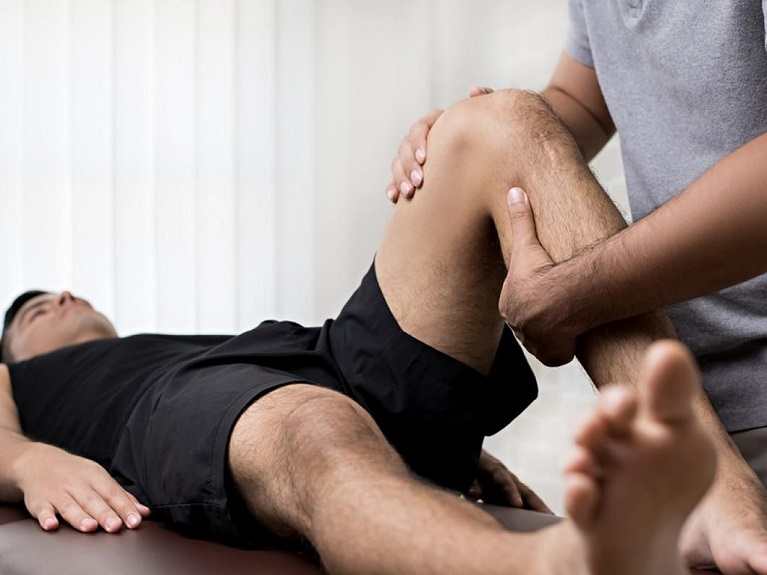Comparing Spinal Decompression and Traditional Back Treatments
All Regarding Spinal Decompression: Effective Solutions for Spinal Health and Wellness
Spinal decompression treatment has emerged as a viable alternative for those seeking relief from various spinal concerns. This non-invasive therapy targets the origin triggers of pain, such as herniated discs and chronic pain in the back. Understanding its applications and concepts can shed light on just how it advertises general spinal health. What are the specific advantages and methods associated with spinal decompression? Discovering these questions might reveal useful understandings for people considering this strategy.
Understanding Spinal Decompression Treatment
Exactly what is spinal decompression treatment, and just how does it function? Spinal decompression therapy is a non-invasive therapy targeted at easing pressure on the spine's nerves and discs. It uses specific tools to carefully stretch the spine, creating negative pressure within the discs. This negative stress facilitates the repositioning of herniated or bulging discs and encourages the increase of crucial nutrients and fluids right into the affected locations.
People normally lie on a motorized table that supports the spine while allowing controlled traction. The therapy can target various spinal conditions, consisting of persistent back sciatic nerve pain, pain, and disc deterioration. Sessions are typically pain-free and can last from 30 to 45 minutes. While lots of clients experience prompt alleviation, a series of sessions may be advised for ideal outcomes. On the whole, spinal decompression treatment represents an all natural approach to spinal health, intending to recover feature and promote overall well-being.
The Scientific Research Behind Spinal Decompression
Spinal decompression therapy is based in principles of biomechanics and physical action to pressure adjustments within the spinal column. This non-invasive treatment aims to ease spinal disc pressure, which can add to pain and pain. By using grip techniques, spinal decompression produces an unfavorable pressure setting within the intervertebral discs. This negative stress promotes the repositioning of herniated or protruding discs and promotes the influx of important nutrients and liquids, aiding in the recovery process.
Research shows that spinal decompression can lead to a rise in disc elevation, which may ease nerve origin compression. Back Decompression Therapy. The therapy likewise intends to improve spinal placement, possibly enhancing general biomechanical function. Recognizing these scientific concepts aids specialists apply spinal decompression successfully, guaranteeing that clients obtain targeted treatment tailored to their certain spinal conditions. In general, the scientific research behind spinal decompression highlights its significance in the field of spinal health and wellness
Benefits of Spinal Decompression
While lots of people look for relief from persistent pain in the back, the advantages of spinal decompression prolong beyond plain discomfort monitoring. This restorative strategy help in improving spinal wellness by advertising correct alignment and decreasing pressure on intervertebral discs. Enhanced circulation is another remarkable advantage, as spinal decompression promotes much better blood flow to the spine, nourishing surrounding tissues and increasing recovery processes.
Additionally, spinal decompression can result in increased versatility and enhanced array of activity, making it possible for individuals to engage in daily activities with better convenience. Many individuals report enhanced total well-being and a decrease in tension degrees, as alleviating neck and back pain can considerably improve top quality of life.
Additionally, spinal decompression may act as a safety net, aiding to avoid future spinal concerns by maintaining optimal spinal feature. Generally, the multifaceted advantages of spinal decompression emphasize its value in advertising long-lasting spinal health and health.
Sorts Of Spinal Decompression Strategies
Different techniques exist for spinal decompression, each designed to alleviate stress on the spine and enhance general wellness. One usual approach is mechanical spinal decompression, which uses a traction table to delicately extend the spine, producing adverse stress in the discs. One more technique is hands-on spinal decompression, executed by a chiropractic physician, who applies controlled pressure to soothe and straighten the spine tension.
On top of that, there are non-invasive treatments such as inversion treatment, where individuals hang upside down to promote spinal elongation. Furthermore, exercises that focus on reinforcing core muscular tissues can contribute to spinal assistance and decompression.
Finally, some practitioners utilize innovative modalities like spinal decompression devices, which are engineered to give targeted alleviation. Each strategy aims to enhance spinal alignment, decrease pain, and improve flexibility, catering to the one-of-a-kind demands of individuals seeking relief from spinal pain.
What to Expect Throughout a Spinal Decompression Session
During a spinal decompression session, patients can prepare for a collection of preparation actions made to ensure their convenience and safety. The session itself usually includes a mix of therapeutic strategies intended at minimizing stress on the spine. Comprehending these aspects can assist people feel a lot more at convenience prior to and during the treatment.
Therapy Preparation Steps
As people prepare for a spine decompression session, they can expect a very carefully structured process made to guarantee their comfort and security. Experts will certainly conduct a complete analysis, assessing clinical history and present signs and symptoms to tailor the therapy. Individuals might be encouraged to put on comfortable apparel and get rid of any kind of jewelry that could hinder the procedure. It's likewise usual for clinicians to describe the technology and techniques used in spinal decompression, guaranteeing individuals comprehend the process and its benefits. In addition, individuals may be instructed to moisturize sufficiently prior to the session. This prep work aims to produce a desirable atmosphere for spinal health and wellness, allowing clients to really feel safe and secure and educated about their treatment trip.
Session Experience Summary
A spinal decompression session typically unravels in a controlled and tranquil atmosphere, where people are located pleasantly on a specialized table developed for the treatment. The expert begins by explaining the process, making sure the individual comprehends each step. Once worked out, mild grip is related to the spine, producing space in between the vertebrae to minimize pressure on the nerves and discs. Patients might feel a light extending experience, but pain should be minimal. Procedure usually last regarding 30 to 45 minutes, throughout which the specialist monitors the client's response. Afterward, patients may get suggestions for follow-up treatment or workouts to improve results. Overall, the experience aims to advertise leisure and healing, cultivating a sense of well-being.
Who Can Benefit From Spinal Decompression?
That stands to gain the most from spinal decompression therapy? People dealing with chronic neck and back pain, herniated discs, or degenerative disc condition are key prospects for this therapy. Those experiencing sciatic nerve pain or numbness in the arm or legs might additionally profit significantly, as spinal decompression can aid ease pressure on the spinal nerves. On top of that, professional athletes recovering from injuries or individuals with postural concerns usually locate alleviation through this therapy.
Furthermore, individuals seeking a non-invasive option to surgical procedure for their spinal health and wellness problems may think about spinal decompression as a viable option. It is essential for prospective candidates to talk to health care professionals to determine the suitability of this therapy for their particular conditions. On the whole, spinal decompression therapy can supply substantial advantages for a diverse array of people, boosting their general lifestyle and advertising better spinal health and wellness.
Tips for Preserving Spinal Health After Treatment
After going through spinal decompression therapy, keeping spinal health is important for long-term well-being. Applying routine exercise regimens, being conscious of posture, and establishing an ergonomic work space can significantly add to a much healthier spine. These methods not just sustain recuperation but additionally aid protect against future concerns.

Routine Exercise Routines
Preserving spinal health and wellness adhering to therapy is crucial for long-lasting healing and general health. Normal workout routines play a crucial function in this process. Participating in low-impact activities such as swimming, walking, and biking can aid strengthen the muscle mass sustaining the spine, improve versatility, and enhance total movement. Incorporating core-strengthening workouts is specifically helpful, as they give security and assistance to the spinal column. Additionally, gentle extending regimens can relieve stress and promote leisure in the back muscular tissues. It is necessary to get in touch with a medical care professional before starting click for source any type of new workout program to assure it lines up with specific recovery goals. Uniformity in these activities promotes a proactive technique to spinal wellness, helping in the avoidance of future concerns.
Stance Awareness Strategies
A strong recognition of pose can greatly impact spinal wellness throughout the healing process. Individuals need to knowingly maintain an upright placement, making certain that the head is aligned with the spine and shoulders are loosened up. Frequently inspecting in with one's pose throughout the day can assist enhance great practices. When resting, using a helpful chair that promotes lumbar support is important. Furthermore, meaning extended periods needs weight circulation between both feet and engaging the core muscles. Practicing mild stretches and flexibility exercises can likewise boost awareness of posture. Mindfulness strategies, such as deep breathing, can aid in identifying tension and advertising leisure in the back. Executing these strategies promotes an aggressive technique to spinal health post-treatment.
Ergonomic Workspace Setup
While an ergonomic workspace may seem like a deluxe, it is vital for those recouping from spinal concerns. her comment is here A well-structured atmosphere can considerably help in preserving spinal health. Crucial element consist of a chair with lumbar assistance, which encourages appropriate stance, and a workdesk elevation that permits arm joints to rest at a 90-degree angle. Additionally, computer system screens need to be at eye level to reduce neck stress. Routine breaks to stretch and stand are vital, as prolonged resting can worsen discomfort. Foot rests can additionally improve blood circulation and minimize pressure on the reduced back. By focusing on these ergonomic principles, people can produce a supportive work space that promotes recuperation and advertises long-term spinal wellness, eventually enhancing general productivity and comfort.
Regularly Asked Inquiries
How Long Does Spinal Decompression Treatment Commonly Take to Show Results?
Spinal decompression therapy usually takes numerous weeks to reveal recognizable outcomes. Most clients experience enhancement within 4 to 6 weeks, depending on individual problems and adherence to the suggested therapy strategy detailed by health care experts.
Exist Any Negative Effects Connected With Spinal Decompression Treatment?
Spinal decompression treatment may create light adverse effects, such as short-lived pain, muscle mass convulsions, or discomfort after treatment. These signs are usually brief and fix rapidly, allowing patients to proceed their therapy efficiently.
Can Spinal Decompression Therapy Be Done at Home?


Is Spinal Decompression Safe for Pregnant Ladies?
Spinal decompression is usually taken into consideration dangerous for expectant ladies because of prospective dangers. It is vital for expectant mommies to speak with healthcare professionals before undergoing any spinal treatments to assure the security of both mommy and infant.
How Commonly Should I Undergo Spinal Decompression Therapy for Best Results?
Generally, people should go through spinal decompression treatment 2 to 3 times a week for finest results. Nonetheless, the frequency may differ based upon individual problems and must be identified by a medical care professional.
Spinal decompression treatment is based in concepts of biomechanics and physical action to stress changes within the spinal column. Comprehending these clinical concepts assists specialists use spinal decompression efficiently, ensuring that clients get targeted treatment customized to their details spinal problems. Spinal decompression may serve as a preventive procedure, aiding to avoid future spinal issues by keeping suitable spinal function. People seeking a non-invasive choice to surgical procedure for their spinal wellness problems might take into consideration spinal decompression as important source a sensible alternative. After undertaking spinal decompression treatment, keeping spinal health and wellness is crucial for lasting health.